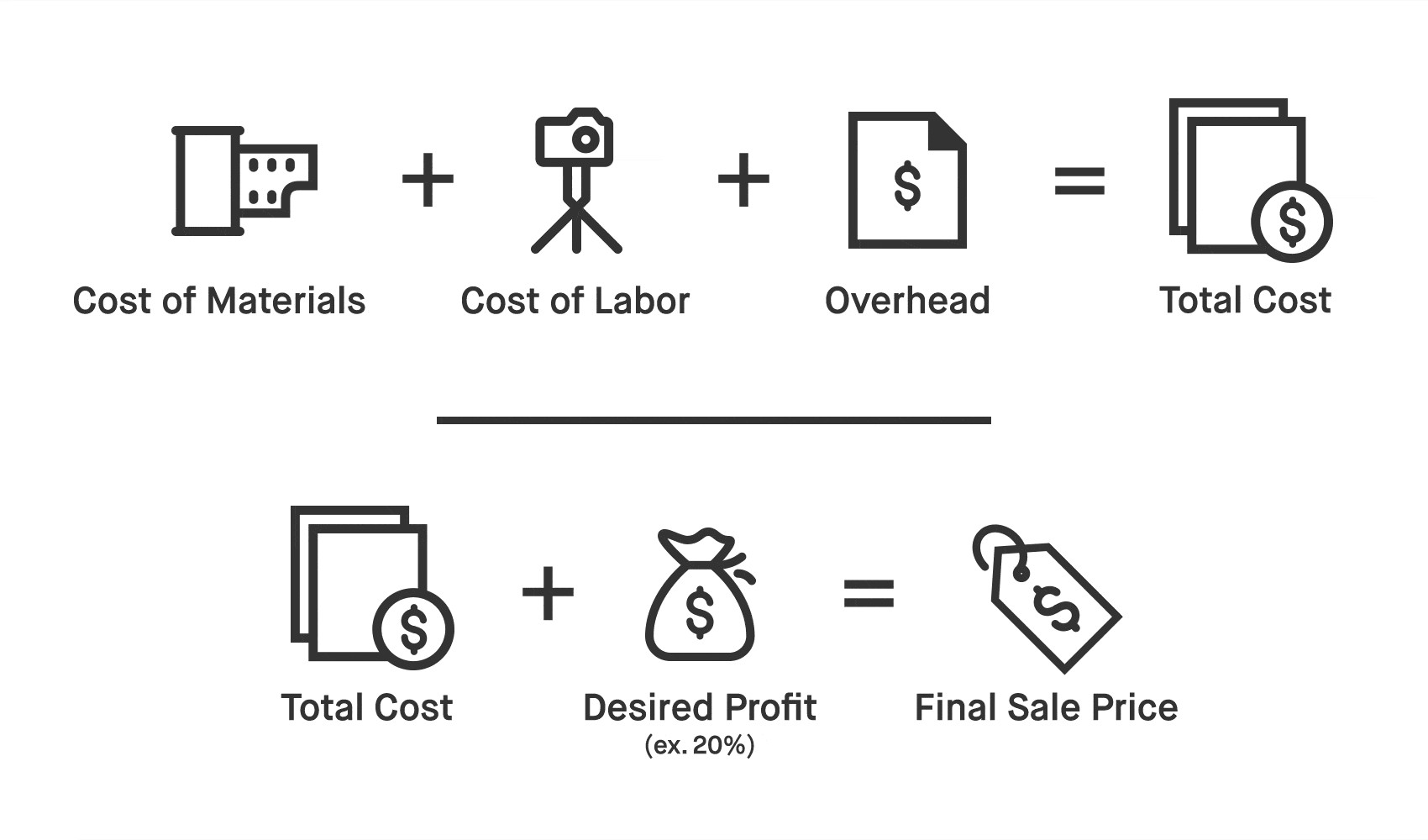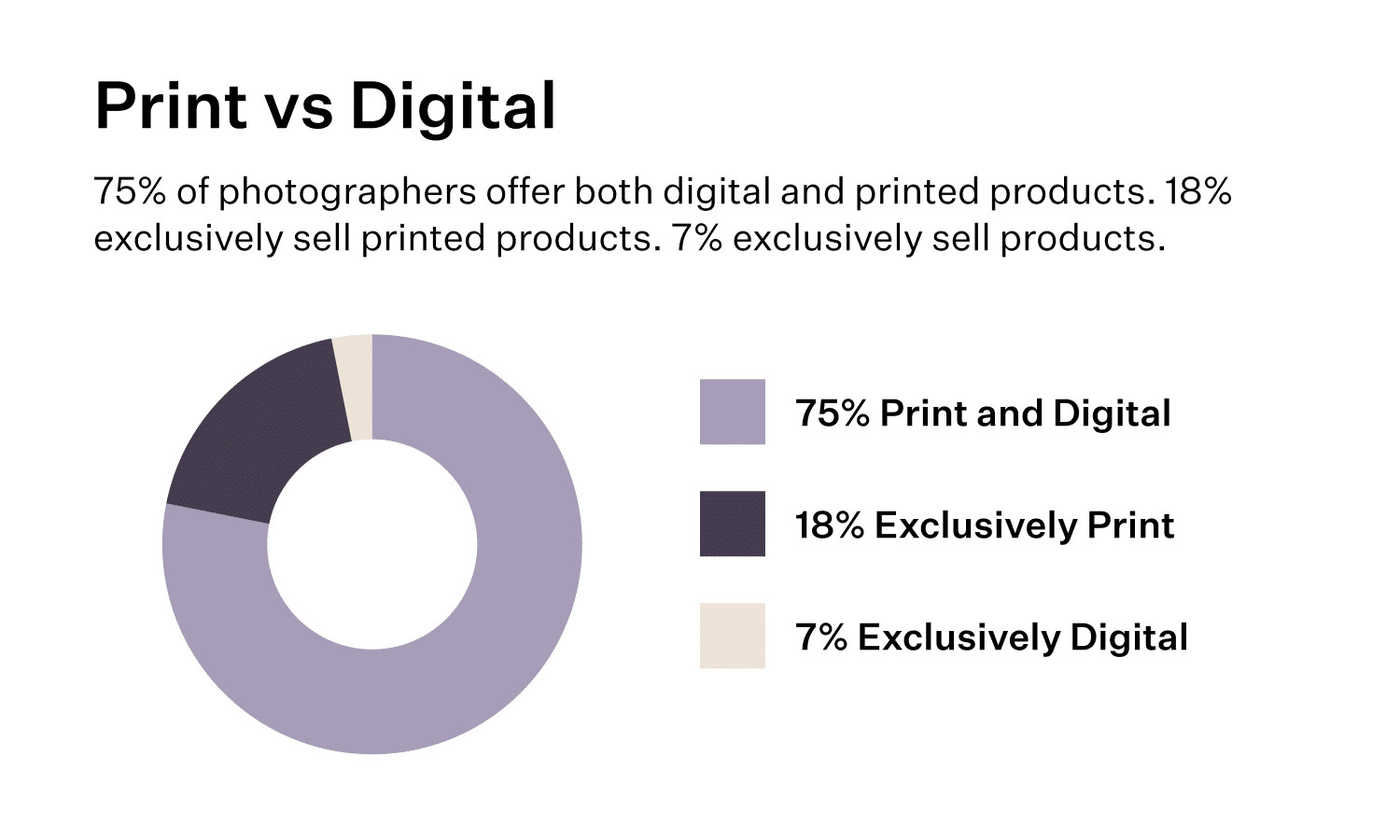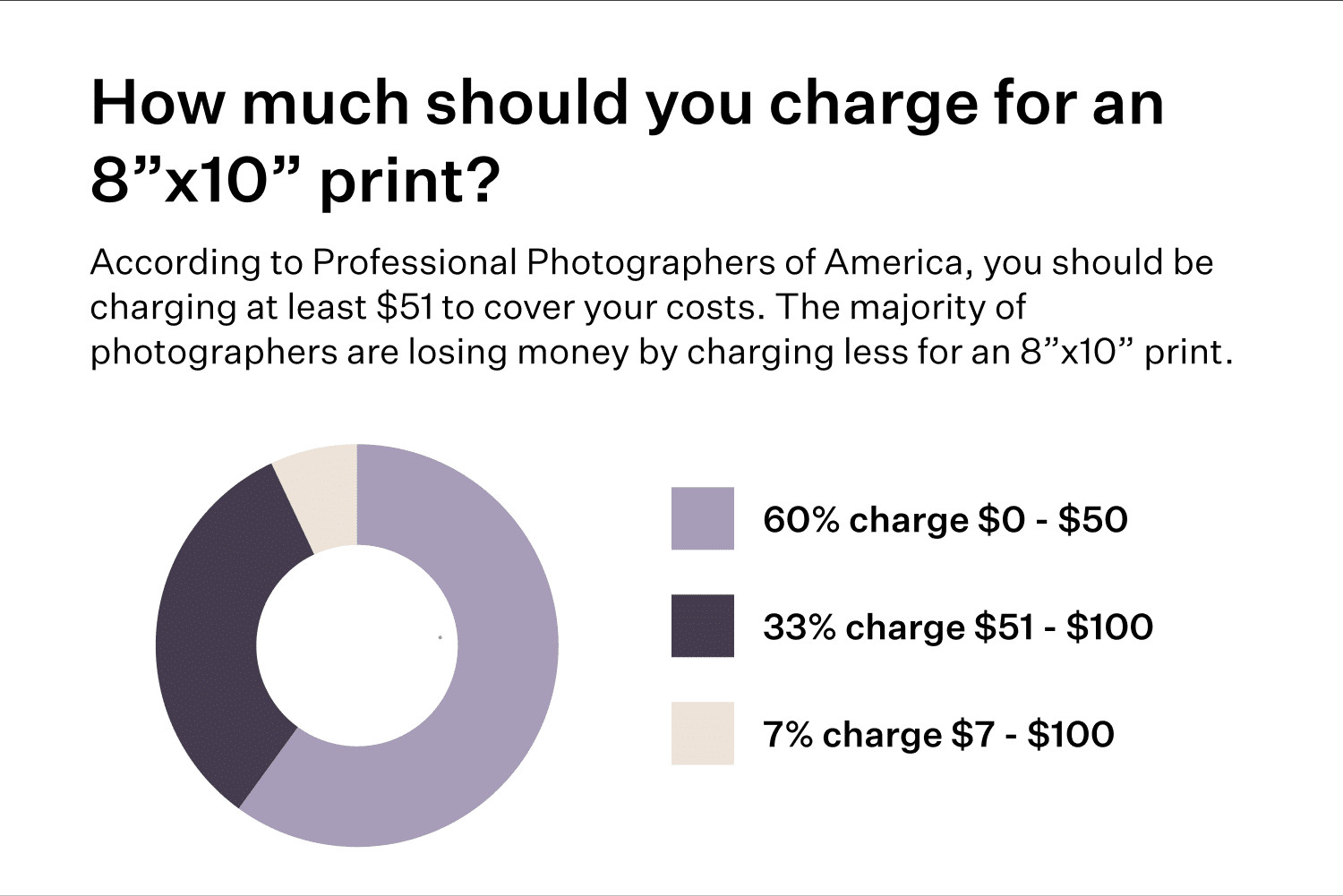Are you wondering How Much To Charge For Grad Photos? dfphoto.net is here to help you navigate the pricing landscape, ensuring you’re fairly compensated while attracting clients. This guide explores cost-plus pricing, value-based models, and market considerations to help you set competitive rates for your graduation photography services, enhancing your photography business and visual storytelling capabilities. Let’s dive into setting your photography rates, graduation photography pricing, and understanding profit margins for business success.
1. Understanding the Cost-Plus Pricing Formula
How can the cost-plus pricing formula help me determine my grad photo prices? This formula ensures you cover all expenses and achieve your desired profit margin. It’s a fundamental approach where you calculate total costs and then add a profit percentage to determine the final sale price.
The cost-plus pricing formula is essential for photographers to set sustainable prices for their services. It involves two main steps:
- Calculating the Total Cost: Add up all expenses incurred to deliver your services.
- Adding Profit Margin: Determine your desired profit percentage and add it to the total cost to arrive at your final sale price.
 FinalSalePrice
FinalSalePrice
Many photographers struggle with pricing because they lack a clear understanding of their business costs, risking undercharging and reduced profits. The cost-plus pricing model helps avoid this by ensuring all expenses are accounted for.
2. Deconstructing Your Costs: A Detailed Breakdown
What costs should I consider when pricing my grad photo packages? Consider materials, labor, overhead, fixed, and variable expenses to ensure profitability. Accurately assessing costs is crucial for photographers to run a sustainable and profitable business.
2.1. Cost of Materials
What materials should I include when calculating the cost of materials for grad photos? Include cameras, lenses, tripods, lighting, backdrops, computers, and memory cards. These direct costs directly impact the quality of your services.
The cost of materials includes all the tools and accessories needed to deliver photography services:
- Professional Cameras: High-quality cameras are essential for capturing clear and detailed images.
- Lenses: Different lenses (e.g., prime, zoom) are needed for various shots and effects.
- Tripods: Tripods ensure stability and sharpness, especially in low-light conditions.
- Lighting Gear: Lighting equipment helps create the desired ambiance and reduce shadows.
- Props: Props add character and personalization to the photos.
- Backdrops: Backdrops provide a clean and consistent background.
- Computer: A laptop or desktop is needed for processing and editing photos.
- Hard Drives: External hard drives are essential for archiving and backing up your work.
- Memory Cards: Reliable memory cards are crucial for storing high-resolution images.
- Miscellaneous Equipment: Spare batteries, chargers, and cleaning supplies are also necessary.
These tools can wear out or become obsolete, necessitating upgrades or replacements. According to research from the Santa Fe University of Art and Design’s Photography Department, in July 2025, allocating a fraction of these costs to each client invoice is vital.
In addition to photography equipment, printing images, creating photo books, and shipping them to clients can also incur costs.
2.2. Selling Digitally
How can selling grad photos digitally reduce my material costs? Focus on selling digital packages to minimize expenses related to printing and shipping. This strategy not only reduces costs but also streamlines your business operations.
Selling grad photos digitally offers a cost-effective alternative to traditional prints. While there are costs associated with managing digital files, they are significantly lower than printing, packaging, and shipping physical prints.
Using platforms like Format, you can set up an online store as part of your portfolio. This allows potential clients to view your work and easily purchase digital prints.
 pie graph showing recommended pricing for print vs digital
pie graph showing recommended pricing for print vs digital
Setting up your own digital shop provides complete freedom over how your images are displayed and avoids the competition found on online marketplaces.
2.3. Cost of Labor
What labor costs should I factor into my grad photo pricing? Include your time for planning, shooting, and editing, plus any assistant photographers or editors you hire. Accurately accounting for labor costs ensures you are fairly compensated for your time and expertise.
Labor costs include the time spent planning, shooting, and post-production. However, they also extend beyond your own pay as the primary photographer:
- Assistant Photographers: Hiring assistants for larger or more complex shoots.
- Photo/Video Editors: Outsourcing post-processing work to handle busy schedules.
- Virtual Assistant: Managing bookings, customer inquiries, and social media.
Experience plays a significant role in determining the value of your time. As your experience grows, your value increases, and your labor costs should reflect this. Regularly assess your fee calculation to ensure you’re adequately compensating yourself.
2.4. Overhead Costs
What overhead costs should I consider when pricing grad photos? Consider rent, utilities, insurance, marketing, software subscriptions, and professional fees. Accurately calculating overhead costs is crucial for maintaining a sustainable business.
Overhead costs are ongoing expenses not tied to a specific project. These are essential for running your photography business:
- Monthly Rent: Renting an office or studio space.
- Utilities: Internet, phone, and other utilities.
- Insurance: Liability and equipment insurance.
- Professional Services: Accounting and legal fees.
- Marketing and Advertising: Website maintenance, ads, and promotional materials.
- Software Subscriptions: Editing software and other tools.
- Professional Membership Dues: Subscriptions to organizations like Professional Photographers of America
To account for overhead costs, add up your annual expenses and divide the total by the projected number of jobs per year. Add this sum to your fee quote for each gig.
2.5. Fixed Expenses
What are fixed expenses and how do they impact my grad photo pricing? Fixed expenses remain constant regardless of the number of projects and include equipment depreciation, loan payments, and salaries. Incorporating fixed expenses ensures your pricing covers all aspects of your business operations.
Fixed expenses remain constant regardless of the number of projects booked:
- Equipment Depreciation: The decrease in value of your equipment over time.
- Regular Loan Payments: Payments for loans taken out for equipment or business operations.
- Salaries: Salaries for permanent employees, including yourself.
Including fixed expenses in your cost calculations ensures your pricing covers all aspects of your business operations, not just direct costs. This is essential for making a profit rather than just breaking even.
2.6. Variable Expenses
What are variable expenses and how do they impact my grad photo pricing? Variable expenses fluctuate based on the specifics of each project, such as travel, equipment rentals, and location fees. Accounting for these ensures each project remains profitable.
Variable expenses fluctuate based on the specifics of each project:
- Travel Expenses: Transportation, accommodation, and meals.
- Equipment Rentals: Renting specific equipment for a particular shoot.
- Location Fees: Fees for shooting in certain locations.
- Special Client Requests: Additional props or services requested by clients.
Accurately accounting for variable expenses ensures that each project remains profitable. Fixed-rate fees are often impractical for photographers due to varying costs from one job to the next.
3. Pricing Guide for Graduation Photography Success
How can I use my cost calculations to determine my grad photo pricing? Add a profit margin to your total cost to arrive at your minimum fee, and create packages based on common client needs. Flexibility and customization are key to accommodating varying project scopes.
Once you’ve calculated your material, labor, and overhead costs, you can determine your pricing for each project. Start by adding a profit margin to your total cost to arrive at your minimum fee for a given project.
Let’s say you have a graduation photography session and have calculated the following costs:
- Material Costs: $300 (camera, lens depreciation)
- Labor Costs: $300 (photographer’s time)
- Fixed and Overhead Costs: $400 (studio rent, software, insurance)
Total Cost: $1000
Adding a 30% profit margin:
- Profit Margin: 30% of $1000 = $300
- Minimum Fee: $1000 + $300 = $1300
This approach ensures that your pricing covers all expenses, compensates you fairly, and includes a profit margin that reflects the value of your work.
4. Industry-Specific Pricing Considerations
How do graduation shoot prices compare to other photography types? Graduation packages typically range from $100 to $400, offering various options like gowns, online proofs, and digital images. Understanding these industry standards helps you set competitive rates.
4.1. Graduation Shoot Prices
What is the typical price range for graduation photography packages? Expect to charge between $100 and $400, depending on the package inclusions. Packages include graduation gown, cap, tassel, online proofs, and digital images. Higher-tier packages offer additional locations and more photo options.
A typical range for graduation picture packages in North America is between $100 to $400 per session. Packages often include:
- Graduation gown
- Cap and tassel
- Online proofs
- Digital images
Higher-tier packages may offer additional locations and more photo options. Consulting with schools about their past expenditures helps align your pricing with their expectations while staying competitive.
5. Different Approaches to Building a Pricing Model
What alternative pricing models can I use for grad photos besides cost-plus? Consider usage-based pricing, hourly rates, and flat rates to tailor your pricing to different client needs. Understanding these models allows you to optimize your revenue and attract a diverse clientele.
5.1. Rates Based on Price Per Photography Use
When is usage-based pricing appropriate for grad photos? Consider this model for high-profile applications where the images generate profit, such as promotional materials. This model ensures you’re compensated fairly based on the commercial value of your images.
Usage-based pricing is ideal for projects where the images will be used in high-profile, profit-generating applications, like promotional materials. This model factors in how, where, and how often the photos will be used.
Photos used in a national campaign command higher rates than those in a local newspaper. The duration of usage (one-time use vs. repeated use) also impacts pricing.
5.2. Hourly Rates
When should I charge hourly rates for grad photos? Hourly rates are suitable for event photography and longer grad sessions where the time investment is significant. Ensure your hourly fee accounts for pre- and post-event activities.
Charging an hourly fee is standard for event photography and can be suitable for longer graduation sessions. This ensures you get paid for all the time invested, including potential overtime.
Research average hourly rates in your area to remain competitive, but make sure your hourly fee accounts for pre- and post-event activities, like travel, client meetings, preparation, and post-production.
5.3. Flat Rates
When are flat rates appropriate for grad photos? Flat rates work well for standard packages with clearly defined deliverables and timeframes. Ensure your contract outlines the scope of work to avoid scope creep.
Experienced photographers sometimes opt to charge flat rates for projects, which requires a deep understanding of the work and costs involved in delivering their services. Be sure to familiarize yourself with local rates to ensure your prices are in a reasonable range.
Since you won’t be paid extra if the job goes longer or becomes more complex than initially planned, it’s extremely important to create a contract that outlines the scope of work and allows for additional charges if the project extends beyond the agreed-upon scope.
5.4. Rates Based on Experience
How does my experience level affect my grad photo pricing? Adjust your rates based on your experience, from beginner to top photographer, to reflect your skills and quality of work. The more experience you have, the higher your rates can be.
Experience significantly influences photography rates. While there is no one-size-fits-all price range, these figures should give you an idea of rough industry expectations by experience level:
- Beginners: $25-$75 per hour
- Students: $50-$100 per hour (depending on training and experience)
- Entry-Level: $50-$150 per hour (recently trained with limited experience)
- Professional: $75-$250 per hour (expected to have comprehensive skills and deliver high-quality work)
- Top Photographers: $250-$500 per hour or up to $10,000 per day for high-end projects
5.5. Rates Based on Specialty
Does specializing in grad photos allow me to charge higher rates? Expertise in a specific type of photography often commands higher fees. Specializing can lead to higher rates due to your focused skill set and reputation.
Specializing in a specific type of photography can enable you to charge higher rates. Expertise in areas like portrait photography often commands higher fees.
6. Testing Your Photography Pricing Model
How can I test and refine my grad photo pricing model? Gather customer feedback, monitor booking patterns, analyze margins, experiment with different models, and adjust for seasonality. Regular evaluation ensures your pricing remains competitive and profitable.
Determining the right pricing for your photography services is an ongoing process. Here are some practical steps to evaluate and adjust your photography pricing model:
- Gather Customer Feedback: Ask for direct feedback on whether the pricing matched the value received.
- Monitor Your Booking Patterns: A high booking rate might indicate that your prices are too low, while a low rate could suggest they are too high.
- Analyze Your Margins: Regularly review your profit margins. If you notice your margins shrinking, it may be time to reassess your rates.
- Experiment with Different Models: Test hourly rates against flat rates or introduce package deals.
- Adjust for Seasonality: Have peak and off-peak pricing to account for seasonal demand.
7. Analyzing Your Competition
How can I use competitor analysis to inform my grad photo pricing? Understand your market by analyzing other photographers’ pricing, packages, location, and perceived value. This helps you position your services effectively.
To understand your market better, analyze other photographers in your area. Conduct market research within your niche to compare your pricing model with that of your competitors.
When reviewing competitor pricing, keep the following considerations in mind:
- Do they favor à la carte solutions, custom packages, or add-on options?
- What are their rates compared to yours, and what pricing model are they using?
- Where are they located—is it possible they’re in a different region with different costs?
- How do they communicate their value?
Don’t feel obligated to match your competition’s prices exactly. Use this exercise to get an accurate picture of industry expectations in your niche and geographic area, but don’t devalue your experience, talent, and soft skills. If you believe your services are worth more, set your prices accordingly.
 pie graph showing recommendations for how much to charge for an 8×10 photo print
pie graph showing recommendations for how much to charge for an 8×10 photo print
8. Essential Tips for Freelance Photographers
What are some essential tips for freelance grad photographers? Focus on high-profit jobs, frequently update your portfolio, and optimize for SEO to drive business. Prioritizing these aspects can significantly enhance your freelance photography career.
- Focus on high-profit jobs.
- Frequently update your online portfolio with current projects.
- Make the most of SEO.
To explore more techniques, discover stunning visual portfolios, and connect with a vibrant community of photographers, visit dfphoto.net today. Enhance your skills with our rich resources and elevate your photography business to new heights.
FAQ: Pricing Grad Photos
1. What is the average cost of graduation photography in the US?
The average cost ranges from $100 to $400 per session, depending on the package inclusions like gowns, caps, online proofs, and digital images.
2. How do I calculate my costs for graduation photography?
Calculate material costs (camera, lenses), labor costs (your time, assistants), overhead costs (rent, utilities), fixed expenses (equipment depreciation), and variable expenses (travel).
3. What is the cost-plus pricing formula for photographers?
Add up all your expenses (materials, labor, overhead, fixed, and variable costs) and add a desired profit margin to determine your final price.
4. Should I charge hourly or offer packages for grad photos?
Consider offering packages for standard shoots with defined deliverables and hourly rates for longer or more complex sessions.
5. How can I determine my profit margin for grad photos?
A realistic profit margin depends on your experience, market perception, and quality of work. A typical profit margin ranges from 20% to 40%.
6. What are some additional costs I should consider?
Consider travel expenses, equipment rentals, location fees, and special client requests.
7. How often should I update my pricing?
Regularly review and adjust your pricing based on market trends, customer feedback, and changes in your costs.
8. What is usage-based pricing?
Usage-based pricing factors in how, where, and how often the photos will be used, ideal for profit-generating applications.
9. How does experience affect my photography rates?
Beginner photographers charge $25-$75 per hour, while top photographers charge $250-$500 per hour or more.
10. How important is it to analyze my competitors?
Analyzing competitors helps you understand market expectations and position your services effectively.
Address: 1600 St Michael’s Dr, Santa Fe, NM 87505, United States.
Phone: +1 (505) 471-6001.
Website: dfphoto.net.